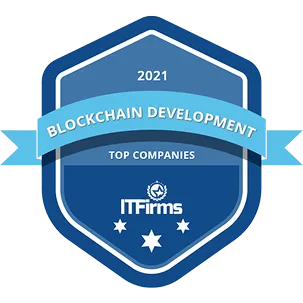How Long Does It Take to Develop a DEX?

Decentralized exchanges (DEXs) are no longer a niche concept – they’re becoming a cornerstone of the blockchain ecosystem. With users demanding greater control over their assets, lower fees, and enhanced security, decentralized exchange development is booming. But here's the big question: how long does it take to develop a DEX? Founders often expect a quick launch, only to find that building a robust, secure and scalable DEX isn't an overnight job.
So, what influences the development timeline? Factors like the type of DEX you want to create, security requirements, and blockchain selection play a huge role. Do you go for a white-label solution to hit the market fast, or a fully custom-built platform for maximum flexibility? These choices impact everything from development speed to long-term sustainability.
In this guide, we’ll break down the decentralized exchange development timeline, key considerations, and practical ways to avoid unnecessary delays. Whether you're an ambitious startup or an established company venturing into DeFi, this article will set realistic expectations for your journey to develop a DEX that thrives in today’s competitive market.
Key Factors Affecting Development Time
When it comes to decentralized exchange development, one thing is clear: there’s no one-size-fits-all approach. The time it takes to develop a DEX depends on a variety of factors, each of which can either speed up or slow down your project. Let’s break down the most critical factors influencing decentralized exchange development time.
Type of a DEX
Not all decentralized exchanges are the same. The development time hinges heavily on the DEX model you choose:
AMM-Based DEXs (Automated Market Makers)
If you’ve used platforms like Uniswap or SushiSwap, you’re already familiar with AMMs. AMM DEXs rely on liquidity pools instead of traditional order books, allowing users to trade directly from their crypto wallets.
- What’s included? Smart contracts for liquidity pools, token swaps, and fee distribution.
- Complexity level? Moderate. While AMMs are relatively straightforward to build, you’ll need to account for challenges like impermanent loss and efficient pricing algorithms.
- Best for? Startups targeting retail users who want a simple, user-friendly trading experience.
Order Book DEXs
Order book DEXs mimic traditional exchanges, where buyers and sellers place orders that are matched by the system. Think of them as the decentralized version of Binance or Coinbase.
- What’s included? Order matching engines, price discovery mechanisms, and advanced trading tools like limit orders.
- Complexity level? Very high. Building a robust order book system requires complex infrastructure and real-time data processing.
- Best for? Projects aiming to cater to professional traders who need more control over their trades.
Perpetual DEXs
Perpetual DEXs allow users to trade derivatives like futures and options with leverage. They’re gaining popularity but come with added complexity.
- What’s included? Perpetual contracts, liquidation mechanisms, and funding rate calculations.
- Complexity level? High. You’ll need to integrate advanced financial instruments and ensure the system can handle high-risk scenarios.
- Best for? Niche markets targeting experienced traders and institutional investors.
Hybrid DEXs
Hybrid DEXs merge elements of AMMs and order books, offering flexibility and enhanced functionality.
- What’s included? A mix of liquidity pools and order book features, often with additional tools like dynamic pricing.
- Complexity level? Very high. Balancing two different models requires careful planning and seamless integration.
- Best for? Ambitious projects looking to innovate and stand out in the crowded DeFi space.
💡 The type of DEX you choose will set the tone for your entire project. Start by identifying your target audience and their needs.
Development Approach: White-Label, Custom-Built, Open-Source
Your approach to decentralized exchange development also plays a major role in the timeline:
- White-Label Solutions: A ready-made framework that can be quickly deployed with some customization. This significantly reduces decentralized exchange development costs and time, making it ideal for startups looking for rapid market entry.
- Custom-Built DEXs: Designed from scratch, these offer full control over the platform, including custom smart contracts, user interfaces, and unique features for DEX development. However, this requires extensive development, testing, and auditing.
- Using an Open-Source Code: You can also build on proven, battle-tested code. Using open-source DEX solutions like Uniswap’s codebase can save you time and resources while still allowing customization.
Blockchain Selection: EVM-Compatible vs. Custom Blockchain
The choice of blockchain for DEX development affects the timeline as well:
- EVM-Compatible Blockchains (for example, Ethereum, BNB Chain, Polygon) allow faster development since they support Solidity-based smart contracts and have extensive developer resources. However, it goes with a limited control over the underlying blockchain infrastructure.
- Using Custom Blockchains (such as zkEVM or other rollup-based solutions) introduces both exciting possibilities and technical hurdles. These networks have unique transaction models, cryptographic proofs, and execution constraints that affect decentralized exchange development. For example, zkEVM imposes ZK counters, which limit the number of operations per transaction. This means that a standard Uniswap fork won’t work out of the box – its smart contracts must be rewritten to fit the ZK proof system and avoid transaction reversions.
Features & Complexity
A basic DEX with standard token swapping functionality is relatively quick to develop, but if you want to build a feature-rich exchange, expect a longer decentralized exchange development process:
- Basic Features: Token swapping, liquidity pools, user authentication, and basic analytics.
- Advanced Functionalities: smart routing, different liquidity types, cross-chain swaps, governance mechanisms, staking, yield farming, referral programs, and advanced charting tools.
Security Requirements
Security is paramount in decentralized exchange development. The more robust the security framework, the longer the development will take:
- Smart Contract Audits: Every line of code must be rigorously tested to prevent vulnerabilities like reentrancy attacks or front-running exploits.
- Penetration Testing: Ethical hacking and stress testing the exchange to simulate real-world attack scenarios.
- Regulatory Compliance: Depending on the jurisdiction, integrating compliance features like KYC/AML checks can extend development time.
Each of these factors shapes the overall timeline of your DEX project. Next, we’ll break down the decentralized exchange development process into its distinct phases and discuss how long each stage typically takes.
Decentralized Exchange Development Timeline Breakdown
DEX development process requires careful planning and execution. While decentralized exchange development follows a general timeline, the actual duration depends on factors like complexity, security measures, and the chosen blockchain ecosystem. Let’s break down the key phases involved in DEX development, so you know what to expect at each step.
Phase 1: Planning & Research (2-4 weeks)
Before jumping into code, solid groundwork is essential. A well-researched plan ensures that decentralized exchange development stays on track and avoids costly reworks later.
- Market Analysis & Competitor Research: Understanding what’s already out there helps in creating a DEX that stands out. What’s working for other exchanges? Where are they falling short? Insights here shape your strategy.
- Technical Specifications & Architecture: Choosing the right blockchain, system architecture, and contract logic is crucial for decentralized exchange development. This includes defining how smart contracts interact with the frontend and backend, ensuring efficient data flow, and optimizing performance to prevent high gas fees or failed transactions.
- Tokenomics & Fee Structure: Will your DEX have a native token? What’s the trading fee model? Getting this right is crucial for long-term sustainability.
💡 Proper planning saves time in later stages!
Phase 2: Smart Contract Development (4-8 weeks)
Smart contract development is the beating heart of any decentralized exchange. These self-executing programs handle everything from trade execution to liquidity management.
- Write a Smart Contract: This phase involves coding custom contracts or modifying open-source ones to fit the specific needs of your DEX. Customization is often necessary for unique trading features, fee models, or security enhancements.
- Write Unit Tests: Instead of manual testing, developers write scripts that execute smart contract functions and compare actual results with expected outputs. This automated approach ensures robust QA processes and eliminates potential vulnerabilities before deployment.
Phase 3: Frontend & Backend Development (6-12 weeks)
This phase is all about building the parts of your platform that users will interact with (frontend) and the behind-the-scenes infrastructure that makes everything work (backend).
- Frontend Development: The frontend is the face of your DEX, focusing on UX/UI design, crypto wallet integration, and smooth user flows. It translates complex blockchain operations into simple, user-friendly actions, making it easy for anyone to trade, stake, or provide liquidity.
- Backend Development: The backend powers your DEX, handling API integrations and database management. Additionally, it powers real-time analytics, displaying key metrics such as user volume, trading fees, total value locked (TVL), and annual percentage rate (APR). These insights help users make informed trading decisions while enhancing the platform’s transparency.
Phase 4: Testing (1-2 weeks)
Testing is a critical step that ensures your decentralized exchange development efforts don’t go to waste.
- Internal Testing: Dev teams run extensive checks to verify smart contract performance, UI responsiveness, and backend connectivity.
- Bug Fixes & Optimizations: Any issues discovered during testing get fixed before external audits.
Phase 5: Security Audits (4-8 weeks)
Security is non-negotiable in decentralized exchange development. Hackers are always lurking, looking for vulnerabilities to exploit.
- Smart Contract Audits: External firms scrutinize the code for potential exploits and suggest necessary fixes.
- Final Security Enhancements: Addressing audit findings and reinforcing security measures.
Phase 6: Deployment & Post-Launch Optimization (1 day - 2 weeks)
The big day is here! It’s time to deploy your DEX and share it with the world.
- Mainnet Deployment: This is where your DEX goes live on the blockchain. It’s an exciting moment, but it’s also critical to monitor the platform closely for any issues.
- Monitoring: Keep an eye on performance metrics, user feedback, and security alerts.
- Improvements: Launch day is just the beginning. Use real-world data to optimize your DEX and add new features based on user demand.
💡 Even after deployment, DEX development is an ongoing process. Continuous improvements and feature upgrades keep the platform competitive.
Decentralized exchange development is a multi-stage journey requiring meticulous planning, strong security practices, and seamless execution. By understanding the key phases, founders can set realistic expectations and avoid pitfalls along the way.
White-Label vs. Custom DEX Development Time
When it comes to decentralized exchange development, one of the first major decisions is whether to choose a white-label or custom decentralized exchange development? Each approach has its advantages and trade-offs, and choosing the right one depends on your business goals, timeline, and technical requirements.
White-Label DEX Development
If you need to develop a DEX quickly and efficiently, a white-label solution is your best choice. These are pre-built platforms that can be customized and launched within a few weeks. Many providers offer solutions that include essential trading functions, wallet integration, and liquidity pool management.
But, there’s a catch: while these solutions are fast, they lack deep customization. You might be able to tweak the UI and add a few extra features, but at their core, they follow a standardized framework. If you have unique business logic or specific security requirements, this approach might limit your flexibility.
Timeline: Deployment can take as little as a few weeks, making it ideal for startups that want to launch quickly.
Pros:
- Quick to deploy, lower costs, and minimal technical expertise required.
- Perfect for testing the market or launching an MVP.
Cons:
- Limited flexibility and scalability. You’re stuck with the features and architecture of the pre-built solution.
- Dependence on the provider, branding constraints, and limited customization.
Custom DEX Development
For projects that require full control over their decentralized exchange development, a custom-built DEX is the way to go. This approach involves designing everything from smart contracts to backend architecture, ensuring the platform meets specific requirements and long-term scalability needs.Custom solutions take longer, but they allow:
- Advanced trading mechanisms.
- Custom tokenomics and fee structures tailored to your business model.
- Tailored features for your unique value propositions.
- Stronger security measures.
Timeline:
Expect a longer development period – anywhere from 1.5 to 3+ months, depending on the complexity of your project.
Pros:
- Unlimited flexibility and scalability. You can add any feature you want, from staking to cross-chain swaps.
- A truly unique product that stands out in the crowded DeFi space.
- Full control over your platform.
Cons:
- Higher costs and longer timelines. You’ll need a skilled development team and a clear vision.
Hybrid Approaches: The Best of Both Worlds?
Sometimes, a hybrid approach is the smartest move. You can integrate white-label solutions for non-core functionalities like automated liquidity managers (ALM) (such as ICHI and Gamma) while developing a custom-built frontend or trading engine. This way, you accelerate time-to-market while still having some level of control.
Factors That Can Delay Development
Now that we’ve discussed how long it takes to develop a DEX, let’s talk about what can slow things down. While some delays are inevitable, being aware of potential bottlenecks can help you mitigate risks and keep your decentralized exchange development on track.
Inexperienced Developers
Blockchain development isn’t like traditional web development. Only Web3-native developers understand the intricacies of smart contracts, gas optimization, and decentralized security. Hiring inexperienced developers can lead to inefficiencies, security vulnerabilities, and delays in decentralized exchange development.
💡 Hire Web3 developers who have experience with blockchain projects. Look for teams that have worked on successful DEXs or DeFi platforms.
Smart Contract Vulnerabilities & Audit Delays
Security is non-negotiable in decentralized exchange development. Audits take time, especially if security firms discover critical vulnerabilities that require fixes and re-audits. Delays often occur when teams underestimate the importance of thorough security checks.
💡 Schedule audits early in the development process to avoid last-minute surprises. Work only with reputable firms.
Complex Feature Requests & Integrations
Adding advanced features like cross-chain trading, custom AMMs, or DAO governance increases complexity. Each additional layer requires extra coding, testing, and security validation, extending the decentralized exchange development timeline.
💡 Start with a Minimum Viable Product (MVP) that includes only the essential features. You can always add more later based on user feedback.
Changing Business Requirements Midway
It’s tempting to pivot or add new features mid-development, but this can disrupt timelines and increase costs. A clear roadmap at the start prevents unnecessary adjustments that slow down progress.
💡 Stick to your original plan as much as possible. If changes are necessary, make sure they’re well-documented and communicated to your team.
Long Approval Cycles
If your decentralized exchange development involves multiple stakeholders, decision-making bottlenecks can cause unnecessary delays. Waiting on approvals for design changes, security fixes, or liquidity integrations can add weeks to your timeline.
💡 Streamline decision-making by assigning clear roles and responsibilities within your team. Use collaboration tools to keep everyone in the loop and speed up communication.
By understanding these potential delays, you can set realistic expectations and take proactive steps to keep your decentralized exchange development running smoothly.
How to Speed Up DEX Development Without Compromising Quality
DEX development is a complex process, but speed doesn’t have to come at the cost of quality. If you’re looking to accelerate your decentralized exchange development, you need a smart strategy, the right tools, and a team that understands the nuances of blockchain. Let’s break down the key ways to streamline the process without cutting corners.
Choosing the Right Blockchain & Tech Stack
Choosing the best blockchain foundation for your decentralized exchange development is crucial. Should you go for Ethereum, BNB Chain, Layer 2 solution, or custom blockchain? The answer depends on your project’s needs. However, EMV-compatible blockchains come with a wealth of tools, libraries, and developer resources, making it easier and faster to build and deploy your DEX.
Your tech stack also plays a huge role. Using battle-tested frameworks like Solidity for smart contracts for EVM-blockchains, React and Angular for frontend, and Python and Node.js for backend can make DEX development smoother and faster. Pre-built solutions can further cut down on development time.
Working with Experienced Developers & Audit Firms
Not all developers are the same. Web3-native developers with deep experience in decentralized exchange development can spot inefficiencies before they become major roadblocks. Their expertise ensures your smart contracts are secure, your UI is user-friendly, and your backend can handle high transaction loads. They’ll help you avoid common pitfalls and deliver a high-quality product.
Security is also non-negotiable in decentralized exchange development. Working with top audit firms ensures your DEX is secure and reliable. Choose auditors who specialize in DeFi projects. They'll understand the unique challenges of decentralized exchange development and provide more targeted feedback in a shorter time frame.
Leveraging Modular Frameworks & Pre-Built Solutions
Why reinvent the wheel? There are plenty of pre-built modules that can save time in decentralized exchange development.
- AMM Templates: If you're building an AMM-based DEX, existing protocols like Uniswap’s V2/V3 contracts can serve as a great starting point.
- Order Book Solutions: White-label solutions allow you to integrate a full order book mechanism instead of coding one from scratch.
- Liquidity Management Tools: Solutions like ICHI and Gamma help automate liquidity management, ensuring your exchange remains efficient.
Effective Project Management & Clear Milestones
A well-managed project is a fast project. Effective project management ensures your team stays on track and delivers on time.
- Agile Methodologies: Agile development allows you to break your project into smaller, manageable tasks. This makes it easier to track progress and adapt to changes.
- Clear Milestones: Set clear, achievable milestones for each phase of decentralized exchange development. This helps you track progress and identify potential delays early.
Conclusion: Setting Realistic Expectations
The time required for decentralized exchange development depends on various factors – customization, security, blockchain and tech stack choice, and developer expertise.
Summary of Time Estimates:
- White-label DEX: A few weeks.
- Custom DEX: 1.5 to 3+ months.
- Hybrid DEX: Somewhere in between.
Balancing Speed, Security, and Customization:
Speed is essential, but security and scalability should never be compromised. By choosing the right blockchain, leveraging pre-built solutions, and working with experts in decentralized exchange development, you can strike the perfect balance between rapid deployment and long-term success.
Final Recommendations for Founders:
💡 Start with a clear plan and stick to it.
💡 Choose the right blockchain and tech stack for your needs.
💡 Work with experienced developers and auditors.
💡 Leverage modular frameworks and pre-built solutions to save time.
Choose Rock’n’Block for Your Decentralized Exchange Development
At Rock’n’Block, we’ve built 300+ blockchain solutions with zero missed deadlines. Our expertise in decentralized exchange development ensures that your project is not only delivered on time but is also secure, scalable, and future-proof.
🚀 Ready to develop a DEX that stands out? Contact Rock’n’Block today and bring your vision to life!
We ❤️ Development
Follow us on social media to receive the hottest blockchain development updates




%20MetaDEXes%20work%20thumbnail.webp)







%201.webp)



